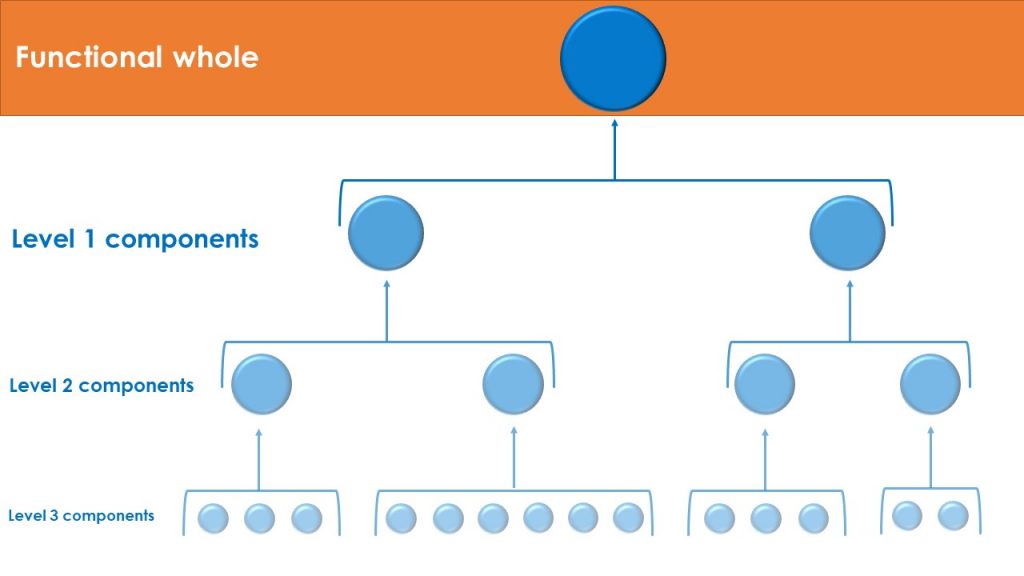
by James Marwood, head of Public Sector Transformation
I don’t like buzzwords or management catchphrases. They may sound good sometimes, but they rarely add anything. You can keep your “helicopter views”, “synergies”, and your “going forwards”. However, there is one term being used more often nowadays that could easily be mistaken for one of these bits of jargon, but one which shouldn’t be mistaken for ‘trying to impress’.
Functional coherence is increasingly important, especially as large organisations seek to realise the value in their investments in digital technologies. As a result, it’s coming up in meetings more and more, but given the puzzled reactions of some of the people involved in those meetings, it’s clearly not always fully understood. So, with that in mind, allow me to explain.
You’ll find definitions about functional cohesion from multiple sources, some using it to argue intelligent design, some for linguistic purposes, many in regard to human biology, but they all have one thing in common: They all describe how sets of smaller functions contribute to larger functions, and how these larger functions plug into even larger functions, and so on, in a hierarchical way, all leading to the delivery of an ideal, smoothly-performing system.

When it comes to the business world, I think of functional coherence as the driver to establish the ideal operating model to support organisational design. In small companies, this can be an easy enough exercise, but what happens when an organisation is huge? Where there are multiple layers? Where lines between functions become blurred, siloed, or transformed beyond recognition?
In some cases, if a company has the money, time and resource available, a huge organisational redesign will take place. Most don’t have that luxury. However, there are more simple solutions.
The one thing that can unite an organisation and help define its functions is technology and how it is used. When it’s not well managed or co-ordinated however, it can be a substantial blocker. I’m sure we’re all familiar with different departments using different software to achieve the same thing. Or using capturing and managing the same data in different ways? Or teams in different parts of a business trying to solve the same problem without speaking to each other? The list goes on.
By improving functional cohesion on the digital, data and technology (DDaT) side of an organisation, dramatic improvements can be made at far less cost than the full organisational redesign. It may not address the ‘square pegs for round holes’ in terms of how services are staffed, but it does mean that services can talk to others using the same language across the entire organisation.
According to Government Functional Standard GovS 005: Digital, Data and Technology:
Decisions should take into account the technology and data required to support any necessary digital service in order to ensure work is integrated and delivered in an end-to-end, coherent manner.
For this reason, functional cohesion needs to be driven from a portfolio, even enterprise level down to individual operational and project teams. Facilitating coherence across a large organisation requires engagement across and between every level, and must be consciously managed to be adaptive to changing organisational needs. Anything less will result in unmanaged complexity, confusion, and duplication of effort across the inevitable siloes.
This is where i3Works comes in. There are many skills that come into play to allow an organisation to develop their DDaT functional cohesion, with portfolio, programme and project management (P3M) playing a major role.
We have proven on multiple occasions that we can steer organisations away from their siloes and into more functional working. Our in-depth stakeholder management, strong communications, skilled delivery team, and the confidence to challenge the status quo, means we get to the crux of the problem and can identify solutions meeting all requirements.
This is currently being demonstrated in our pivotal role in providing the portfolio management office within the MOD’s Defence Digital service and our ongoing support of transformation in the same area. We were also responsible for the introduction of the Chief Digital Information Office within the Cabinet Office, resulting in the complex activity across the organisation becoming far better aligned and, more importantly, future proofed.
Driving proper functional cohesion successfully will result in improved co-ordination on all aspects, from day-to-day performance through to long-term strategy. Get your functional coherence right, and your goal of one-organisation working towards a united, shared strategy becomes a reality. And we can help you get there.
